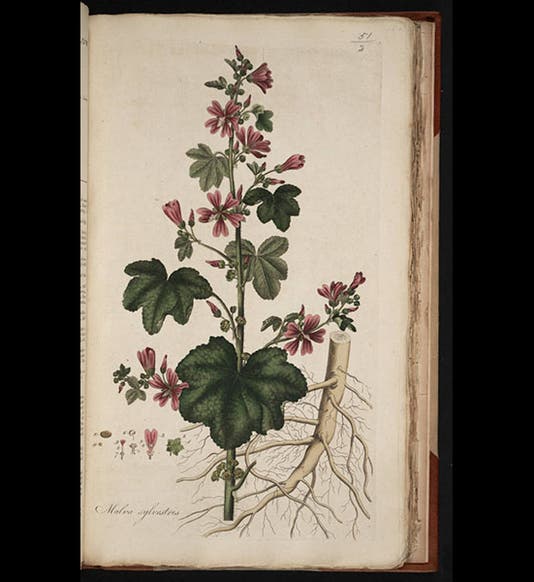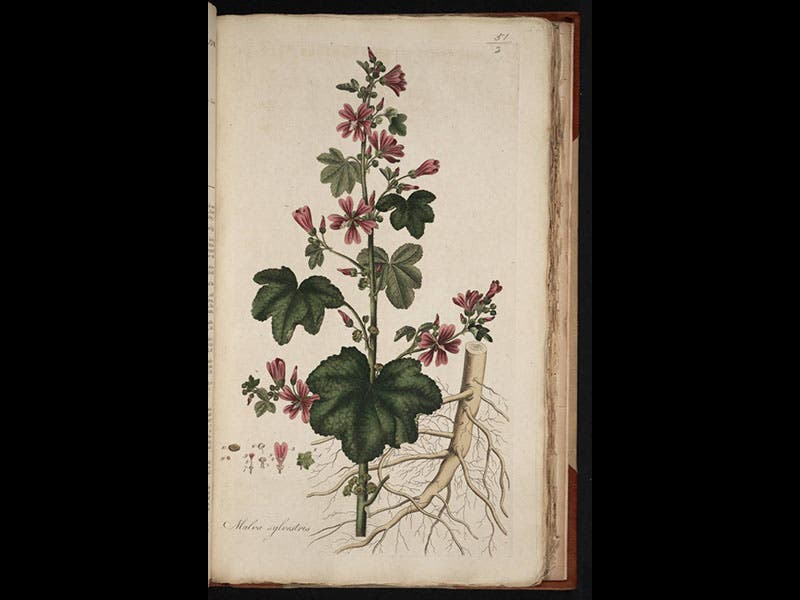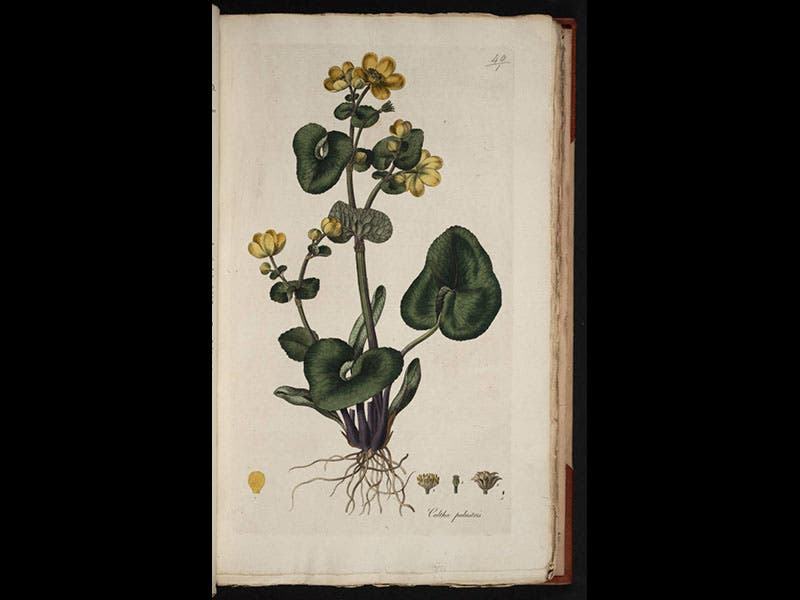Scientist of the Day - William Curtis
William Curtis, a London pharmacist and botanist, died July 7, 1799, at age 53. In 1771, Curtis became demonstrator of plants at the Chelsea Physic Garden in London and gave up his pharmacy business. In 1775, he began issuing by subscription an elegant series of folio plates that came to be called, collectively, the Flora Londinensis. It was intended to illustrate all of the plants that one could find in the environs of London. 434 large and beautiful floral plates were printed before publication ceased in 1798. In 1787, Curtis also began issuing a journal, The Botanical Magazine, which was much more modest in size, but with plates just as lovely and colorful as the Flora. Curtis's Botanical Magazine, as it came to be called, survived Curtis's death and continued to appear until almost the end of the 20th century, and it remains one of the most admired of botanical serial publications. In its heyday, in the mid-19th-century, the plants were described by William Jackson Hooker, director of Kew Gardens, and illustrated by the notable Scottish artist, Walter Hood Fitch. In our 2009 exhibition that celebrated the bicentennial of the birth of Charles Darwin, called The Grandeur of Life, we displayed both the Flora Londinensis and a volume of Curtis's Botanical Garden.
The plates above are all from the Flora Londinensis and depict, in order: the common mallow, a marsh marigold, an ajuga, and a veronica.
Dr. William B. Ashworth, Jr., Consultant for the History of Science, Linda Hall Library and Associate Professor, Department of History, University of Missouri-Kansas City. Comments or corrections are welcome; please direct to ashworthw@umkc.edu.










